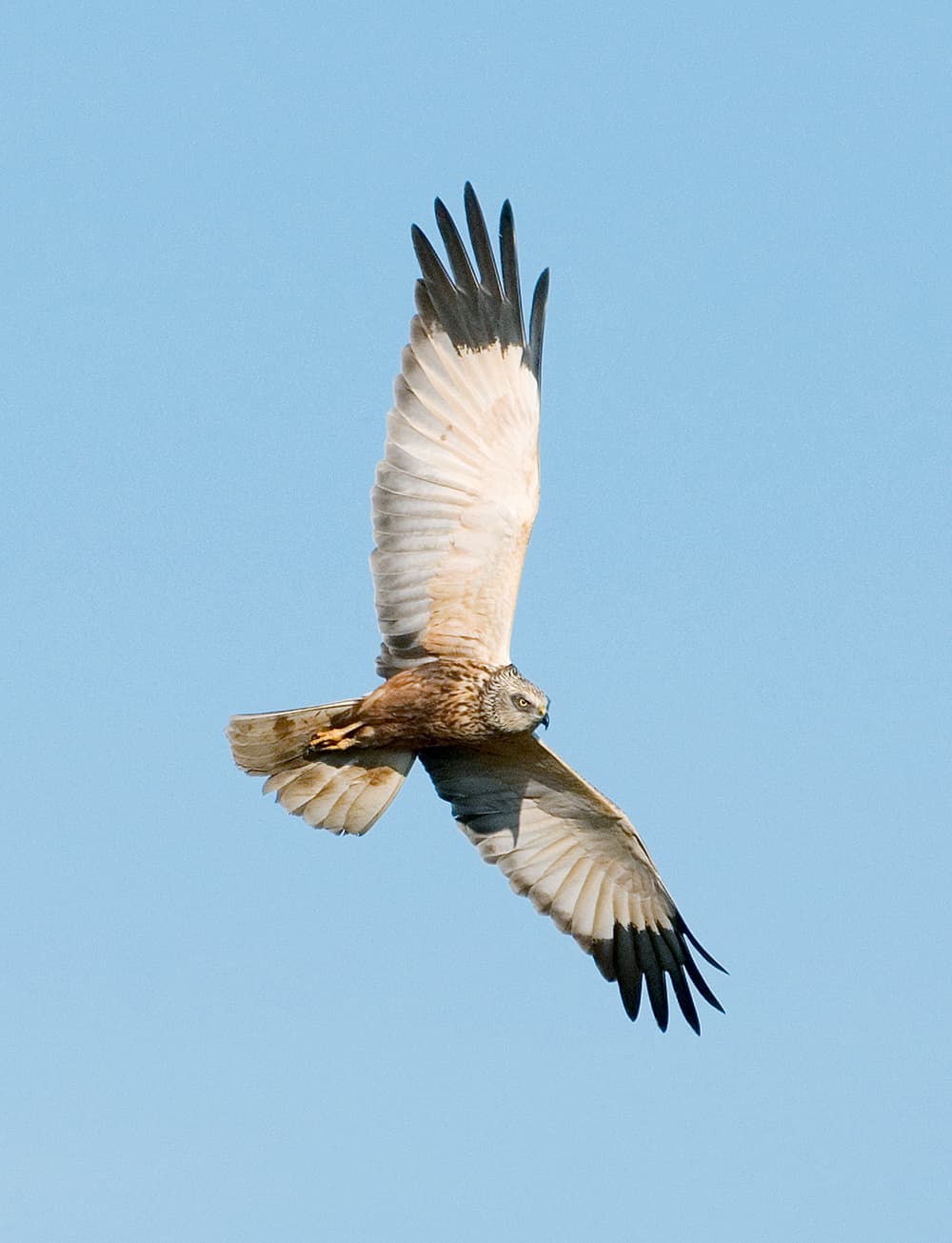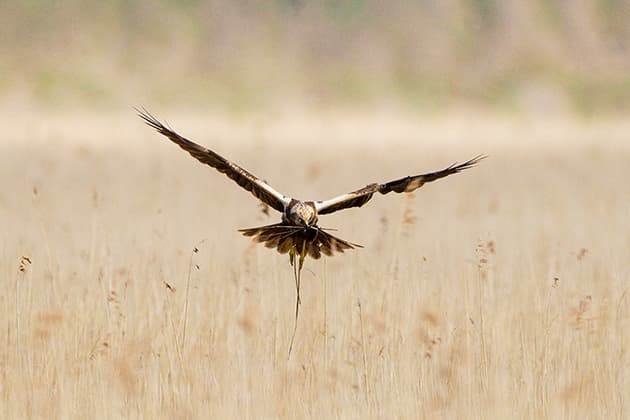
All these images were taken by David at RSPB and Wildlife Trust reserves in the east of England
About the marsh harrier
With their wings forming a shallow ‘V’ shape, the marsh harrier is the largest of the harrier family of birds. Females are larger than males and have a distinctive cream-coloured head.
- Location Found in the south-east and east England, although some can be found in the north-west and south-west Scotland.
- Size Slightly larger than a buzzard at 47-57cm in length with a wingspan of 115-140cm.
- Nest The birds can be found on the ground in large reed beds, but they also nest in crops.
- Diet Typically small birds, amphibians and mammals.
- Population The UK sees some 320-450 breeding pairs annually. There has been a dramatic increase since the existence of a single British breeding pair in the 1970s.
As fledgling birder in the late 1970s, I remember lusting over the only British breeding pair of marsh harriers. Left alone and fully protected, their comeback has been a great success story, with a growing population estimated to be currently around 450 pairs.
Habitat
Marsh harrier strongholds include East Anglia, Lincolnshire and the south-east of England. They are spreading, and now breed in low numbers in other regions of the country. Nature reserves with large areas of reeds tend to be the best sites to visit to attempt to photograph marsh harriers. This is one of Britain’s more challenging species! Be aware that this is a sensitive breeding bird, and is protected under the Wildlife and Countryside Act 1981. Any disturbance at or near a nest is strictly forbidden.
Best time to shoot
Early spring and early summer are two key times for photographing these birds. Marsh harrier pairs are very active in the early spring. Males dance high in the sky, while females collect sticks and reeds to build their nests. By early summer, chicks have arrived and are being fed. Males bring food, making a ‘food pass’ to a female that flies up from the nest and catches the prey in mid-air – a challenging image to capture.

Marsh harriers fly low over reed beds, creating superb photographic opportunities
Shooting advice
Early or late?
The birds are active throughout the day, but it’s worth noting that on warm, sunny days reed beds generate a great deal of heat, which then rises to form a heat haze. While it may be hard to see with the human eye, this haze will degrade image quality and make your images look soft. If shooting over reeds, then early mornings or evenings, when it’s cooler, tend to be best.
Getting close
As already mentioned, this shy species is protected by law. However, the large reed beds in which they breed are primarily within nature reserves, with excellent hides that offer you the best opportunity of getting close.
All the images in this article were taken on reserves managed by the RSPB or The Wildlife Trusts in eastern England. You need patience and perseverance, so repeated visits and time spent waiting will be rewarded.
Opportunities on reserves vary annually depending on whether birds are nesting close to hides or regularly hunting in certain areas, so a bit of research may be required. Locations that are worth visiting for marsh harrier photography include RSPB Minsmere and RSPB Lakenheath Fen, both in Suffolk; and RSPB Strumpshaw Fen in Norfolk. These sites hold enough breeding birds to provide good shooting opportunities and are excellent sites to photograph other species.
Marsh harriers’ habitat and their custom of flying low over reeds lends itself to images that show the wider view, placing the bird within its environment. So even if they do not come close, it should be possible to get some good results.

Slightly larger than a buzzard, marsh harriers are very active in early spring
Kit list
Beanbag
A beanbag may be useful for supporting a long lens when shooting from reserve hides.
Teleconverter
A long lens is vital to success – at least 500mm is desirable. However, a teleconverter will help extend that focal length even further.
David Tipling is one of the most widely published wildlife photographers. His pictures have appeared on hundreds of book and magazine covers, and have been used in other ways, from wine labels to being projected in New York’s Times Square. www.davidtipling.com







